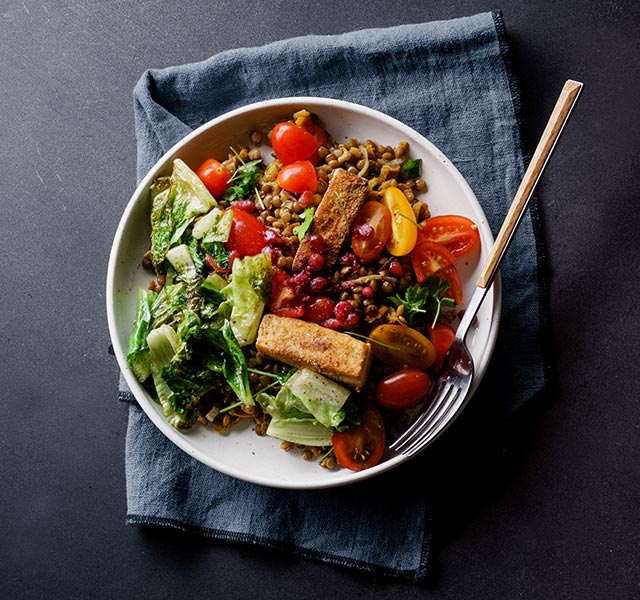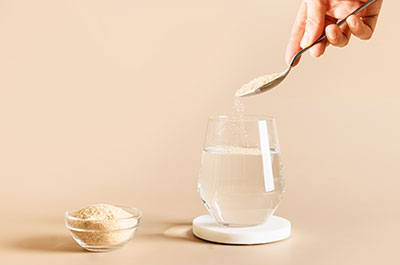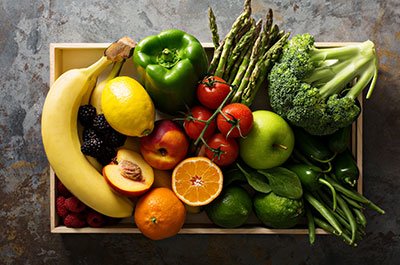Wellness fads come and go, and not all of them are good for your health. But sometimes these health trends do have a place in a healthy lifestyle, and fibermaxxing is one of them.
What is fibermaxxing, and should you try it? Henry Ford Health registered dietitian Ashlee Carnahan, MS, RDN, CLC, CPT, explains who might benefit from fibermaxxing and how to do it safely.
What Is Fibermaxxing?
Fibermaxxing is, as the name suggests, getting the maximum amount of fiber in your diet. But why is this important?
“Eating enough fiber is crucial for digestive health, and helps you feel fuller, longer, so it can help with weight management,” says Carnahan. “Whole foods like fruits and vegetables also contain antioxidants, which can help prevent certain types of cancer.”
Despite its excellent health benefits, fiber often gets neglected in the American diet. Research shows 95% of U.S. adults are not getting the recommended 25 grams per day for women and 38 grams per day for men. Fibermaxxing could be a way to close the gap between what we’re getting and what we need.
How to Get Started With Fibermaxxing
Most Americans don’t get enough fiber because we’re eating too many low-fiber processed foods. Think white bread, pasta and rice, as well as chips, crackers and other packaged snacks.
“Many people are not eating the recommended three vegetables and two fruit servings per day,” Carnahan explains. “And those foods—along with legumes and whole grains—are where the fiber is at.”
Try adding more of these foods to your plate and eating them first, before going for the meat or low-fiber options. “It’s easier to add in fruits and vegetables if you choose ones you like,” Carnahan says. “If you don’t like broccoli, don’t eat it. There are plenty of other vegetables that are rich in fiber, such as spinach, cauliflower or sweet potatoes.”
Once you’ve mastered adding more fruits and vegetables to your rotation, consider these additional strategies:
- Substitute plant-based proteins: “Switch out a meat for a plant-based protein one or two days a week,” Carnahan suggests. Black beans, chickpeas and other legumes provide protein along with fiber and nutrients.
- Upgrade your breakfast: Carnahan suggests oatmeal topped with berries instead of low-fiber cereals or white toast.
- Make subtle swaps: Instead of jumping from French fries to steamed vegetables, which can be challenging, try a baked potato with the skin on. “Whole potatoes are nutritious and rich in fiber,” says Carnahan.
- Go whole grain: Replace white bread, white pasta, and white rice with 100% whole wheat alternatives and brown rice. "You can still have pasta and bread, but get some fiber while you’re eating it,” Carnahan says.
Whatever swaps you choose, don't try to overhaul your entire diet all at once. An extreme diet shift can be hard to maintain, which could sabotage your long-term goals. “Make one change at a time,” suggests Carnahan. “Give it a week, and if it’s working for you, add another. Keep making small adjustments one at a time until you meet your fiber goal.”
Don’t Forget Fluids
While you’re increasing your fiber intake, make sure you’re staying hydrated. “When you are increasing your fiber, drinking enough water is very important,” Carnahan stresses. “Fiber absorbs water in your digestive tract as it moves through. If you don’t have enough water in your system, the fiber can form a bulky stool that is difficult to pass.”
What to Know Before Fibermaxxing
Most people can (and should) focus on more fiber, but there’s a right and wrong way to do fibermaxxing. Specifically, your gut will not appreciate an extreme, sudden fiber increase.
“At a minimum, an abrupt jump in your fiber intake can cause gas, bloating and abdominal pain,” Carnahan says. “At worst, it can lead to constipation, diarrhea or a potentially serious bowel blockage.”
If you have a gastrointestinal condition like irritable bowel syndrome (IBS), inflammatory bowel disease (IBD) or a history of bowel blockages, talk with your provider before fibermaxxing. “In some cases, eating higher amounts of fiber can worsen your symptoms,” says Carnahan.

Subscribe To Our E-Newsletter
Can’t I Just Use Fiber Supplements?
Diet changes are never easy, and it seems like fiber supplements offer a possible solution. Can you make up for lost fiber by taking a fiber gummy, pill or powder?
“Fiber supplements don’t offer the same benefits as whole foods,” Carnahan says. “Food sources provide not just fiber, but also vitamins and minerals that supplements may not have. And when you’re eating plenty of fruits, vegetables and whole grains, you’ll likely feel better in general. Your body will be getting the nutrients it needs from a balanced diet.”
Supplements aren’t always bad, though. They may be appropriate if you have a medical reason or chronic constipation. But for most people trying to reach their fiber goals, whole foods are the better choice.
Make Fiber Work for You
You don’t have to copy a fibermaxxing plan you saw on social media. With so many fruits, vegetables, legumes and whole grains to choose from, you can make fibermaxxing fit your tastes.
“Increasing fiber doesn’t mean your diet has to be bland or restrictive,” says Carnahan. “Eat whole foods you enjoy, and you’re much more likely to stick with your plan long-term.”
Reviewed by Ashlee Carnahan, MS, RDN, CLC, CPT, a registered dietitian nutritionist who sees patients at Henry Ford Hospital.



